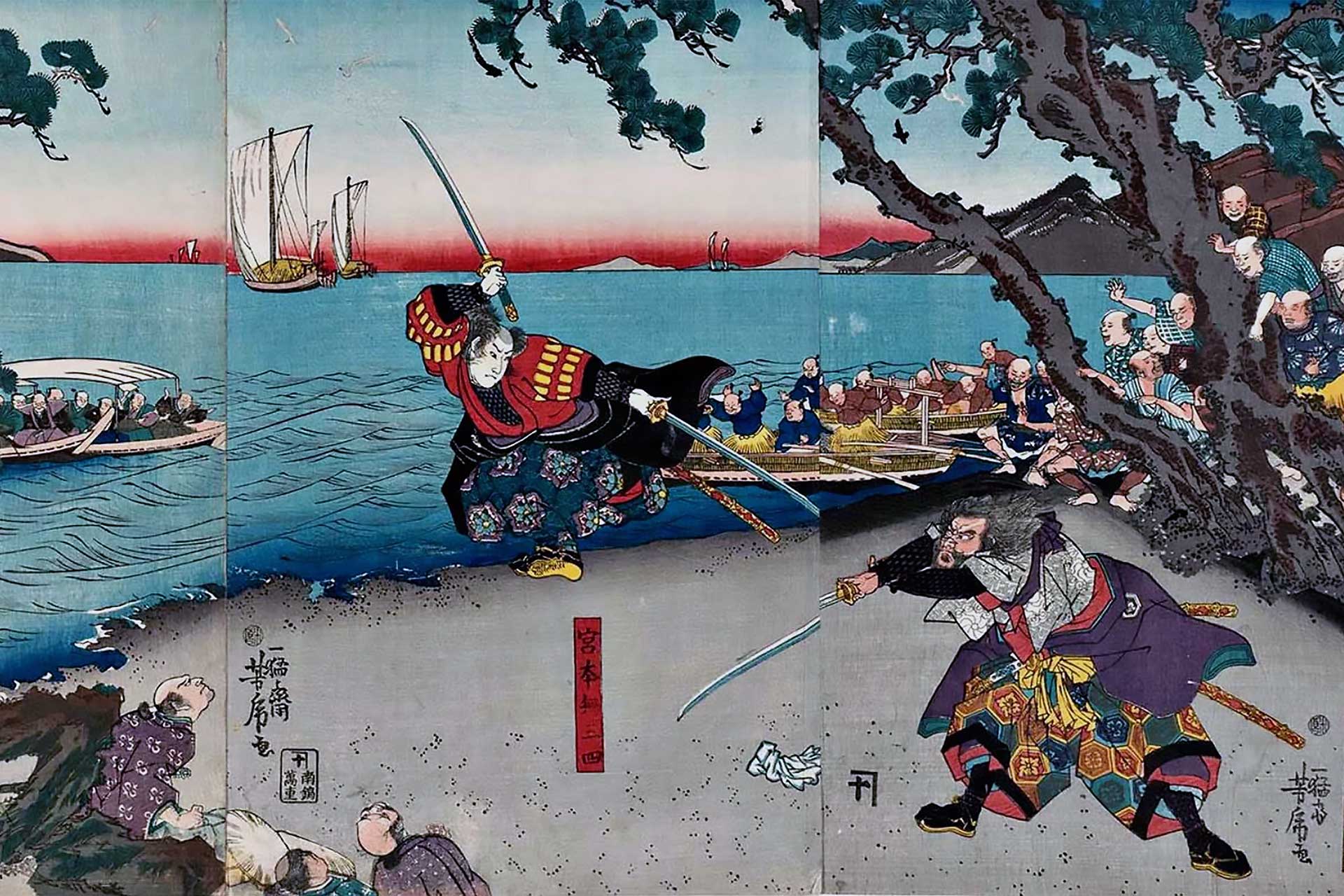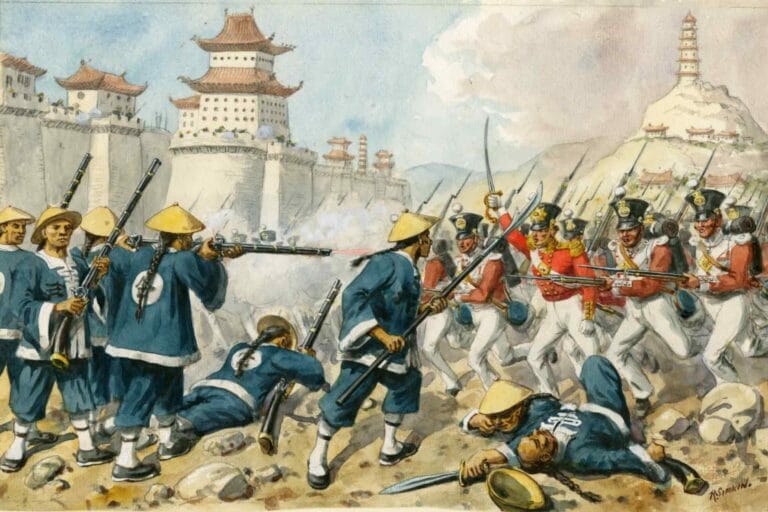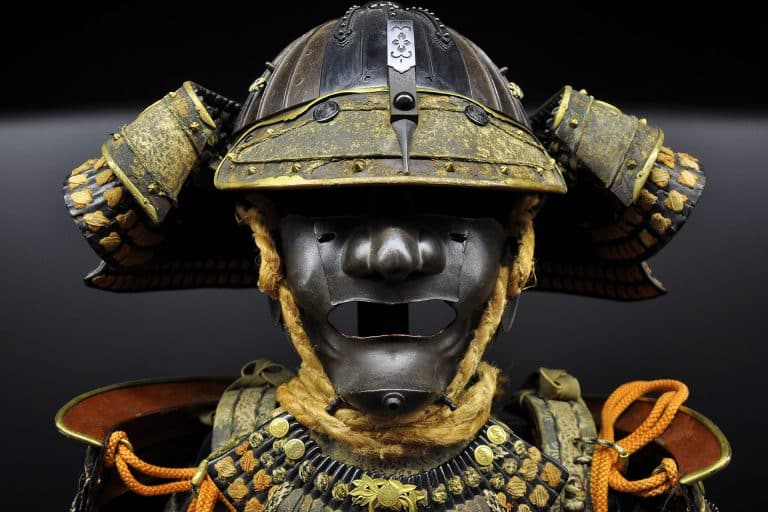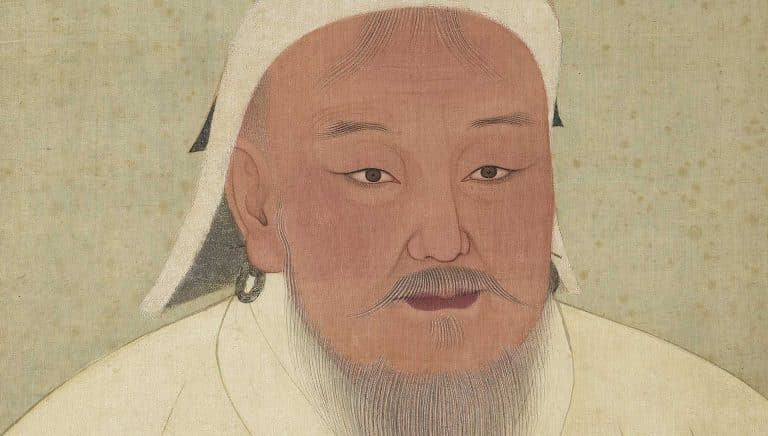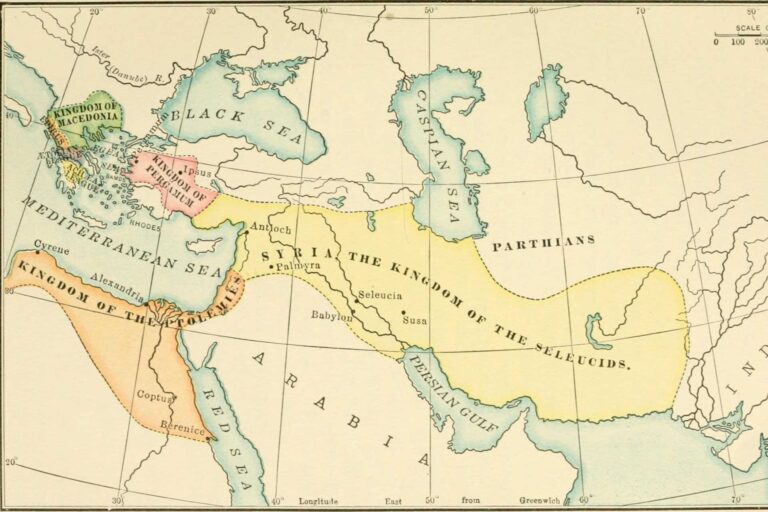The Path of the Ronin: 10 Samurai Who Forged Their Own Destinies
The word “ronin” evokes images of masterless samurai wandering the Japanese landscape, bound by honor yet freed from feudal ties. These legendary warriors, often ostracized from the societal structures of their time, embarked on solitary journeys that have fascinated historians, artists, and enthusiasts alike. This article delves into the lives of 10 Ronin who, through bravery, defiance, and sheer will, carved their paths and left indelible marks on Japan’s storied past.
Each of these samurai tells a unique tale of resilience in the face of adversity, challenging the rigid norms of their era to shape their destinies. From avenging fallen masters to becoming influential military tacticians, their stories offer a window into the complexities of samurai life and the enduring narrative of the Ronin.
Understanding Ronin: The Masterless Samurai
A ronin, translating to ‘drifter’ or ‘wanderer,’ embodies the image of a samurai without a lord or master. This status was not chosen but thrust upon them through the death of their master or a fall from grace that severed their feudal bonds. Historically, the samurai code, Bushido, dictated that a samurai should commit seppuku, a form of ritual suicide, to maintain honor upon the loss of his master. However, not all chose this path, leading to the emergence of Ronin, who navigated a life “on their own” amidst a society that viewed them with a mix of awe and disdain.
The life of a ronin was fraught with challenges, primarily stemming from the loss of social status and the financial and legal privileges that came with serving a daimyo or a notable clan. This exile was not just a personal crisis but a societal commentary on loyalty, honor, and the rigid structures of feudal Japan. The discrimination against Ronin was pervasive, often relegating them to the fringes of samurai society, where they were looked upon with suspicion and prejudice.
Yet, the Ronin represented a unique facet of Japanese culture, embodying resilience, adaptability, and, sometimes, fierce independence. Their existence questioned the unyielding nature of Bushido and feudal loyalty, offering tales of redemption, revenge, and self-discovery. As we explore the lives of 10 such legendary ronin, their stories unfurl the complex tapestry of samurai life, where honor was a constant pursuit, regardless of one’s status.
Miyamoto Musashi: The Legendary Ronin

Miyamoto Musashi, born in 1584, remains one of the most revered figures in Japanese history. He was a master swordsman whose life path defined Ronin’s struggle and triumph. Musashi’s journey into ronindom began following the Battle of Sekigahara in 1600, a pivotal conflict that solidified the Tokugawa shogunate’s power. Unlike many samurai who found themselves masterless after such tumultuous times, Musashi chose the ronin path to hone his skills and philosophy, rejecting offers of fealty to dedicate himself to the Way of the Sword.
Musashi’s tales of bravery are numerous, and his life is a series of legendary duels that underscore his prowess and strategic genius. Perhaps the most famous is his duel on Ganryu Island against Sasaki Kojiro, a formidable opponent known for his “Swallow Cut” technique. Musashi emerged victorious using a wooden sword he carved from an oar, a recall of his principle that strategy outweighs the weapon.
Beyond his duels, Musashi was a philosopher and artist. He penned “The Book of Five Rings,” a treatise on strategy, tactics, and philosophy that transcends martial arts. His work, emphasizing adaptability, foresight, and understanding the rhythm of situations, influences not only martial artists but also business leaders and strategists worldwide.
Musashi’s final years were spent as a hermit, focusing on painting, sculpting, and writing. His death in 1645 marked the end of an era but the beginning of his eternal legacy as a symbol of dedication, resilience, and the pursuit of mastery. Musashi’s life, embodying the Ronin nature, continues to inspire those who seek to forge their destinies beyond the constraints of traditional paths.
Sasaki Kojiro: The Illustrious Blade of the Wind

Sasaki Kojiro’s origins are shrouded in mystery, much like the swirling winds he emulated in combat. Kojiro was known for his exceptional skill with the long sword, or nodachi, Kojiro’s path diverged from that of a traditional samurai, leading him to become a ronin. While specific details of his transition to a masterless samurai remain obscured by time, his reputation as a formidable swordsman attracted both admiration and challenge across feudal Japan.
Kojiro’s most legendary feat is undoubtedly his unique technique, the “Tsubame Gaeshi” or “Swallow Return” strike, which is said to mimic the motion of a swallow’s tail in flight. This technique’s speed and precision made it nearly unbeatable, and tales of Kojiro executing this move with flawless accuracy solidified his status as a legendary figure. His mastery of the long sword, which he affectionately named “Monohoshizao” (Drying Pole), allowed him to utilize reach and fluidity to outmaneuver opponents, further distinguishing him in the annals of martial prowess.
Despite his formidable skill, Kojiro is most famously remembered for his duel with Miyamoto Musashi on Ganryu Island. This battle, marked by strategy and legendary cunning, ended in Kojiro’s defeat. Yet, this moment in history showcases the era’s warrior ethos and the ultimate respect adversaries held for one another despite the fatal outcomes of their encounters.
Beyond his martial exploits, Kojiro’s life and personality remain enigmatic, lending him an almost mythical status. Legends suggest he was a refined individual, appreciative of the arts and culture, contrasting the brutal reality of his duels. This duality underscores the complex nature of the samurai and Ronin, who balanced the way of the sword with more profound philosophical and artistic pursuits.
Sasaki Kojiro’s legacy, while intimately tied to his defeat by Musashi, transcends this singular event. His life as a ronin, the tales of his unmatched technique, and his lasting influence on Japanese martial tradition have fascinated generations, embodying the essence of the Ronin who forges his destiny amidst the turbulent waves of feudal Japan.
Oishi Yoshio and the Legend of the 47 Ronin
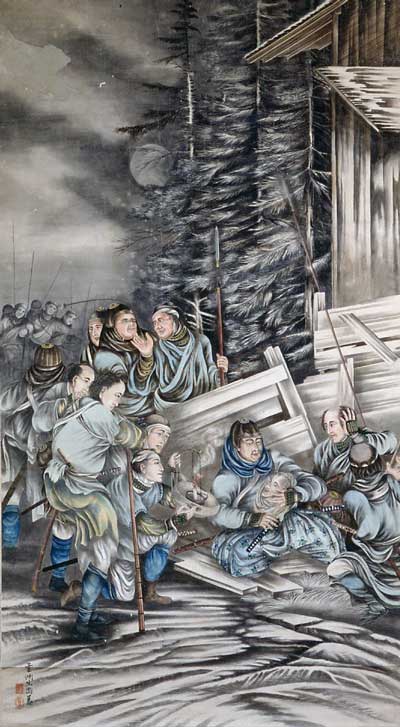
The tale of Oishi Yoshio and the 47 Ronin is a poignant chronicle of loyalty, honor, and vengeance that has become emblematic of the samurai code. This group of samurai became Ronin, masterless warriors, following the forced seppuku (ritual suicide) of their lord, Asano Naganori, who attacked a court official named Kira Yoshinaka in the shogun’s palace. The shogunate’s decision not to punish Kira and sentence Asano to death left the samurai without a master, transforming them into Ronin.
Under the leadership of Oishi Yoshio, Asano’s loyal chief retainer, the Ronin meticulously planned and executed a vendetta against Kira, avenging their lord’s honor after waiting patiently and strategically for over a year. Their legendary feat culminated in a night assault on Kira’s residence in Edo (modern-day Tokyo), where they finally apprehended and executed him, subsequently placing his head on Asano’s grave as a symbol of their loyalty.
The 47 Ronin’s story, also known as the Akō vendetta, highlights the depth of samurai loyalty and the complexities of Bushido, the samurai code. Their actions sparked a moral dilemma in feudal Japan, as their adherence to the principles of loyalty and vengeance conflicted with the law. Eventually, the shogunate ordered the Ronin to commit seppuku, which they did with honor, further cementing their legacy.
The graves of Oishi Yoshio and the 47 Ronin at Sengakuji Temple in Tokyo have become pilgrimage sites, symbolizing the virtues of loyalty, sacrifice, and honor. Their story has been retold through generations and immortalized in plays, books, and films, making them heroes in Japanese culture and beyond. Their saga of loyalty and revenge is celebrated in the annual festival of Gishi-sai and is the subject of the Chūshingura, one of Japan’s most enduring tales.
Takasugi Shinsaku: The Revolutionary Ronin
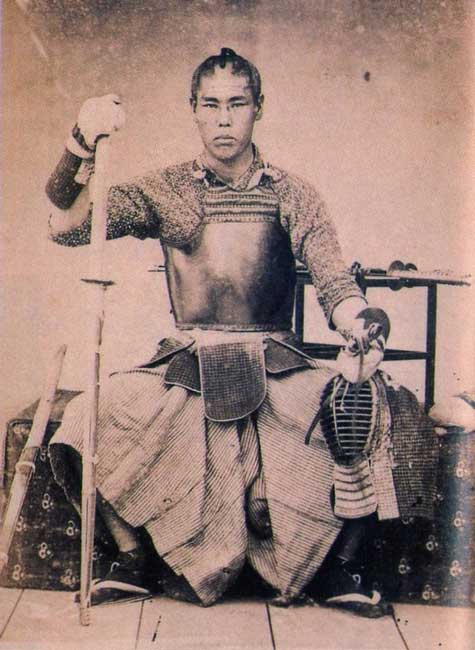
Takasugi Shinsaku may not have been a ronin in the traditional sense of a masterless samurai wandering feudal Japan. Instead, his life took a revolutionary path, marking him as a ronin of ideals, breaking from the strict confines of his samurai status to forge a new destiny for Japan. Born into a samurai family in the Chōshū Domain, Takasugi’s innovative vision led him to advocate for radical change, setting the stage for the Meiji Restoration.
Takasugi’s contribution to Japanese history is monumental, most notably in modernizing the samurai military. He founded the Kiheitai, a revolutionary militia that integrated peasants and samurai, demonstrating his break from traditional samurai class restrictions. This force became pivotal in overthrowing the Tokugawa Shogunate, showcasing Takasugi’s strategic brilliance and commitment to a more inclusive society.
Despite battling tuberculosis, Takasugi’s zeal for reform never waned. He is credited with laying the groundwork for Japan’s rapid modernization, steering the country from feudal isolationism toward a centralized, modern state. His actions were driven by a belief in “Sonno Joi” (revere the Emperor, expel the barbarians). Yet, his interpretations of this philosophy were innovative, focusing on internal strength through unity rather than mere xenophobia.
Takasugi Shinsaku died young, at the age of 28, just before seeing the full realization of the Meiji Restoration. However, his legacy as a visionary who transcended his samurai origins to become a key architect of modern Japan endures. His life and actions exemplify the essence of being a ronin – not merely as a masterless samurai but as an individual who forges their path, challenging the status quo for a higher purpose.
Tani Sanjūrō: Master of the Sword and Spirit
Tani Sanjūrō’s journey to becoming a ronin is less documented than others. Still, his reputation as a formidable swordsman and a man of principle stands out in the annals of samurai history. His life exemplifies the Ronin’s path of adhering to the Bushido code, even in the absence of a lord or master. He was a known master of the Shintō Munen-ryū style of fencing. Sanjūrō’s mastery of the sword was not just for battle but also a means of seeking perfection in his character, embodying the true essence of a samurai.
Sanjūrō’s legendary feats include his notable participation in the tumultuous times of the Bakumatsu period, where he sided with forces that sought to restore imperial rule. This era was marked by a series of clashes between the Tokugawa shogunate and those loyal to the Emperor, setting the stage for Sanjūrō’s legendary contributions. His combat skills matched his strategic acumen, making him a key figure in several pivotal battles that shaped Japan’s transition from feudalism to modernity.
Beyond the battlefield, Sanjūrō was known for his deep philosophical insights and commitment to the education of younger warriors. He believed in the importance of mental fortitude, strategy, and the art of war, imparting these lessons to his pupils. His teachings emphasized the significance of living with honor and integrity, values that he believed were the essence of the samurai way.
Tani Sanjūrō’s story is a tribute to the nature of the Ronin—warriors who, despite their masterless status, continued to live by the codes of loyalty, honor, and discipline. His life inspires those who seek to navigate their destiny with courage and a solid moral compass, proving that the true samurai heart transcends the need for earthly recognition and rewards.

Kyokutei Bakin: The Literary Ronin
Kyokutei Bakin, born Takizawa Okikuni, is an exemplar not of the sword but of the pen, marking his destiny apart from his contemporaries. His transition to a ronin was not due to a loss in battle or the fall of a master but was a deliberate choice stemming from his deep-seated passion for literature over martial pursuits. In an era when the way of the samurai was predominantly associated with warfare and loyalty to a lord, Bakin’s decision to dedicate his life to writing was revolutionary, making him a ronin in a cultural, rather than literal, sense.
Bakin is best known for his epic novel “Nansō Satomi Hakkenden” (Tales of the Eight Dogs). This monumental work took decades to complete and remains one of the greatest masterpieces of Japanese literature. This epic, interweaving themes of loyalty, morality, and supernatural elements with the rigor of the Bushido code, transcended the usual storytelling of his time, illustrating Bakin’s legendary feat in the realm of Edo-period literature.
Despite being blinded later in life, Bakin’s perseverance in completing his literary works showcases his indomitable exuberance. His tales, enriched with the complexities of human nature and the moral dilemmas of the samurai, have left an indelible mark on Japanese culture. Bakin’s writings entertained and imparted moral lessons, reflecting his lifelong commitment to the samurai ethics of righteousness and integrity.
Kyokutei Bakin’s reputation as a literary ronin highlights a unique path of forging one’s destiny. His journey underscores the broad spectrum of the ronin identity, demonstrating that the essence of the samurai could also be pursued through intellect and creativity. Bakin’s life and works remind us that the essence of being a samurai, or a ronin, is not confined to the battlefield but can also flourish in the pursuit of knowledge and the arts.
Sakamoto Ryōma: The Visionary Ronin

Sakamoto Ryōma’s journey from samurai to Ronin was fueled not by the fall of a lord but by his visionary ideals. Born into a low-ranking samurai family, Ryōma saw the limitations of the feudal system and the potential for a new Japan. Dissatisfied with the rigid class structures and the isolationist policies of the Tokugawa shogunate, he became a ronin, dedicating his life to the country’s modernization and unification.
Ryōma is perhaps most celebrated for his role in negotiating the alliance between the Chōshū and Satsuma domains, two powerful clans that had been long-time enemies. This alliance was pivotal in the eventual overthrow of the Tokugawa shogunate, leading to the Meiji Restoration. Ryōma’s ability to see beyond clan rivalries and envision a unified Japan was a legendary feat that changed the course of Japanese history.
Among his many contributions, Ryōma was instrumental in modernizing Japan’s military and establishing the Kameyama Shachū, Japan’s first private navy. He also drafted the “Eight-Point Program,” a visionary document that laid the foundation for a new, modern government structure. His ideas were revolutionary, advocating for a nation governed by merit rather than birthright and opening Japan to the world.
Ryōma’s life was tragically cut short when he was assassinated at the age of 33. Sakamoto Ryōma is remembered not only as a critical figure in the Meiji Restoration but also as a symbol of progress, enlightenment, and the indomitable spirit of the Ronin. His vision for a better Japan and his efforts to break down the barriers that divided his country have cemented his status as one of the most influential and beloved figures in Japanese history.

Yamada Nagamasa: The Ronin Who Became a Lord in Foreign Lands
Yamada Nagamasa’s story is a fascinating tale of adventure and leadership far from his native Japan. Initially a ronin, Yamada’s quest for purpose and honor led him to Southeast Asia, specifically to the Kingdom of Ayutthaya in present-day Thailand, where he rose from a foreign mercenary to a respected lord and military commander. His transition from a masterless samurai to a figure of authority in a foreign land showcases the adaptability and resilience of the Ronin.
Yamada is renowned for his military prowess and leadership of the Japanese volunteer army within Ayutthaya, known as the “Yamada Unit.” His contributions to Ayutthaya’s military campaigns against neighboring kingdoms were significant, earning him land, title, and respect from his Japanese peers and the Siamese royalty. Yamada’s unique position facilitated cultural exchange and cemented a lasting relationship between Japan and Thailand, a heritage that continues to be celebrated today.
Besides his martial achievements, Yamada Nagamasa’s life in Ayutthaya is surrounded by tales of diplomacy, trade, and establishing a Japanese settlement that thrived under his stewardship. He played a crucial role in promoting Japanese interests in the region, acting as a bridge between the cultures. His efforts in fostering peaceful relations and mutual respect between the Japanese settlers and the local populace were legendary, illustrating his understanding of governance and diplomacy.
Yamada’s story ends with his mysterious death, which some accounts attribute to illness while others suggest foul play. Regardless of how he met his end, Yamada Nagamasa’s extraordinary journey from Ronin to foreign lord embodies the adventurous spirit of the samurai who forged their destinies. His tale is a testament to the impact one individual can have, transcending borders and cultural barriers, and remains a compelling chapter in the saga of Ronin’s path.
Takamori Saigo: The Last Samurai’s Rebellious Spirit

Takamori Saigo’s transition into a ronin resulted from his staunch opposition to the Tokugawa shogunate and subsequent forced exile. Known as the “Last Samurai,” Saigo played a pivotal role in the Meiji Restoration, which aimed to restore imperial rule to Japan. His dissatisfaction with the new Meiji government’s policies, particularly the Westernization of Japan and the dissolution of the samurai class, eventually led him to renounce his position and adopt the life of a ronin once again.
Saigo is most famed for leading the Satsuma Rebellion in 1877, the last and largest samurai uprising against the Meiji government. Though unsuccessful, the rebellion is a testament to Saigo’s leadership, martial prowess, and unwavering commitment to the samurai code of honor. His defiance became legendary, embodying the tide of resistance against the erosion of traditional Japanese values and the samurai way of life.
Beyond his military exploits, Saigo’s influence extended to politics and education. Before his fall from favor with the Meiji government, he was instrumental in establishing Japan’s modern conscript army and promoting compulsory education, demonstrating his foresight and commitment to Japan’s future. His contradictory legacy as both a modernizer and a traditionalist highlights the complexity of his character and the transitional period in which he lived.
Saigo’s death in the final battle of the Satsuma Rebellion elevated him to a near-mythical status. Posthumously pardoned by the Emperor, he was revered as a national hero who epitomized the virtues of loyalty, courage, and self-sacrifice. Today, Saigo Takamori is remembered not only for his military valor but also for his profound impact on the course of Japanese history, standing as an unremitting symbol of the samurai’s indomitable role in the face of change.
Tsukahara Bokuden: The Sword Saint’s Path

Tsukahara Bokuden, a legendary figure in the annals of Japanese martial arts, distinguished himself not through the typical narrative of a masterless samurai but by choosing a path that transcended the traditional roles bound by feudal servitude. Renowned for his prowess in ninjutsu, the art of the sword, Bokuden’s life journey oscillated between that of a revered samurai and a ronin, not due to the loss of his master but driven by a quest for martial enlightenment that saw him wandering the lands to challenge and learn from other swordsmen.
Among the tales solidifying Bokuden’s legendary status is his reputed involvement in developing the concept of “Mushin,” or “no-mindedness,” a state of mental clarity and spontaneity in combat. This principle would heavily influence future generations of martial artists. Another famed story illustrates his preference for strategy over brute force; when confronted by a boastful samurai on a boat, Bokuden lured him onto an island under the pretense of a duel, only to row away, leaving the aggressor stranded, demonstrating his belief in victory without bloodshed.
Bokuden’s contributions extended beyond the battlefield; he is credited with founding the Kashima Shintō-ryū, a classical school of Japanese swordsmanship that emphasizes technique, strategy, and the cultivation of a serene mind. This school, among the oldest martial traditions in Japan, reflects Bokuden’s philosophical approach to combat and his dedication to the refinement of the spirit through the discipline of the sword.
Despite his status as a ronin, Bokuden’s legend remains one of honor and respect. His life solidified the ideal that true mastery transcends the need for a lord and that a samurai’s most significant duty is to pursue excellence and wisdom. Tsukahara Bokuden remains a pinnacle of the warrior-scholar, embodying the virtues of skill, intelligence, and integrity that continue to inspire martial artists worldwide.
The Legacy of the Ronin
The tales of these ten Ronin illuminate the shadows of feudal Japan with their remarkable exploits and indomitable vibrance. With agility and foresight, they navigated the turbulent waters of a society bound by rigid codes, charting their courses in history.
Through their actions, these masterless samurai underscored the profound truth that one’s birth or station does not always write one’s destiny but by the strength of one’s will and the sharpness of one blade.
Their legacies, wrapped in myth and reality, continue to captivate and inspire, reminding us of the constant power of individual agency against the backdrop of collective norms. The path of the Ronin, with its trials, tribulations, and triumphs, forever stands as a testament to the samurai spirit that refuses to be quenched.

